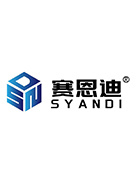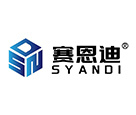
Unleashing the Power of Aluminum Upper Strut Arm Parts in Engineering
项目类型:
应用区域:
使用产品:
安装型号:
Unleashing the Power of Aluminum Upper Strut Arm Parts in Engineering
Table of Contents
- 1. Introduction to Aluminum Upper Strut Arm Parts
- 2. Key Benefits of Aluminum Upper Strut Arm Parts
- 2.1 Weight Reduction and Performance Enhancement
- 2.2 Corrosion Resistance and Longevity
- 2.3 Cost-Effectiveness in Manufacturing
- 3. Applications of Aluminum Upper Strut Arm Parts in Engineering
- 4. Design Considerations for Aluminum Upper Strut Arm Parts
- 5. Manufacturing Process of Aluminum Upper Strut Arm Parts
- 6. Maintenance Tips for Aluminum Upper Strut Arm Parts
- 7. Future Trends in Aluminum Upper Strut Arm Parts
- 8. Frequently Asked Questions (FAQs)
- 9. Conclusion
1. Introduction to Aluminum Upper Strut Arm Parts
Aluminum upper strut arm parts represent a significant innovation in the realm of engineering components. These parts, integral to various machinery and vehicles, offer a combination of strength, lightweight construction, and durability. As the engineering sector continues to evolve, the demand for materials that enhance performance while reducing weight has never been more critical. **Aluminum**, with its unique properties, provides an optimal solution for engineers aiming to improve functionality without compromising on safety.
2. Key Benefits of Aluminum Upper Strut Arm Parts
Aluminum upper strut arm parts come with an array of benefits that make them a preferred choice in engineering applications. Understanding these advantages can help engineering professionals make informed decisions regarding their projects.
2.1 Weight Reduction and Performance Enhancement
One of the most compelling benefits of using aluminum for upper strut arm parts is the **significant weight reduction**. Compared to steel, aluminum is much lighter, allowing for easier handling and reduced overall weight of the machinery or vehicle. This weight reduction translates to enhanced performance, improved fuel efficiency, and lower emissions. With a lighter strut arm, machines can achieve higher speeds and better handling, making them more efficient in various operational scenarios.
2.2 Corrosion Resistance and Longevity
Aluminum is naturally resistant to corrosion, thanks to the formation of a protective oxide layer that prevents further oxidation. This quality makes aluminum upper strut arm parts highly durable, ensuring they can withstand harsh environmental conditions. Whether exposed to moisture, chemicals, or extreme temperatures, these parts maintain their integrity over time, leading to lower maintenance costs and extended service life.
2.3 Cost-Effectiveness in Manufacturing
While aluminum may have a slightly higher initial cost compared to other materials, its overall cost-effectiveness becomes apparent when considering the longevity and reduced maintenance requirements of aluminum upper strut arm parts. Moreover, advancements in manufacturing processes have made it possible to produce high-quality aluminum components more efficiently, further driving down costs. This makes aluminum a financially sound choice for engineers looking to balance quality with budget constraints.
3. Applications of Aluminum Upper Strut Arm Parts in Engineering
Aluminum upper strut arm parts are utilized across various sectors of engineering, showcasing their versatility and adaptability.
3.1 Construction Machinery
In the construction industry, the demand for robust yet lightweight components is paramount. Aluminum upper strut arm parts are integral to excavators, loaders, and other heavy machinery. Their superior strength-to-weight ratio allows for increased lifting capabilities while reducing overall equipment weight, resulting in improved efficiency on construction sites.
3.2 Automotive Industry
The automotive industry has embraced aluminum components extensively, particularly in performance vehicles. Aluminum upper strut arms contribute to better handling, improved aerodynamics, and fuel efficiency. As manufacturers shift towards electric and hybrid vehicles, the lightweight properties of aluminum become increasingly beneficial, allowing for greater range and performance.
3.3 Aerospace Sector
The aerospace sector demands the highest standards of safety and performance, making aluminum upper strut arm parts a natural choice for aircraft designs. Their lightweight nature contributes to fuel efficiency, while their corrosion resistance ensures longevity in various atmospheric conditions. These components are crucial in maintaining the structural integrity of aircraft, thereby enhancing safety for passengers and cargo alike.
4. Design Considerations for Aluminum Upper Strut Arm Parts
When designing aluminum upper strut arm parts, engineers must consider several factors to maximize performance and durability.
Effective design begins with understanding the mechanical properties of aluminum, including its strength, stiffness, and fatigue resistance. Engineers should also consider the intended application to determine the most suitable aluminum alloy, as various alloys offer different characteristics suited for specific environments.
Moreover, engineers must ensure that the design incorporates the necessary safety factors, particularly in demanding applications like construction and aerospace. This involves performing thorough stress analysis and fatigue testing to predict how the parts will behave under various loads and conditions.
5. Manufacturing Process of Aluminum Upper Strut Arm Parts
The manufacturing of aluminum upper strut arm parts involves several key processes that can affect the final quality of the components.
**Casting, machining, and forging** are the primary methods used to create these parts. Each technique has its advantages and is selected based on the specific requirements of the application. For instance, **casting** allows for complex shapes and is cost-effective for large production runs, while **machining** provides high precision for tighter tolerances.
Once the initial shape is formed, **surface treatments** such as anodizing can be applied to enhance corrosion resistance and improve appearance. Anodizing not only protects the aluminum but also allows for the addition of color, making it easier for manufacturers to brand their products.
6. Maintenance Tips for Aluminum Upper Strut Arm Parts
To ensure the longevity and optimal performance of aluminum upper strut arm parts, proper maintenance is essential. Here are some key maintenance tips:
1. **Regular Inspections**: Conduct routine inspections to check for any signs of wear or damage. Look for surface cracks, corrosion, or any deformation that may compromise performance.
2. **Cleaning**: Keep the parts clean to prevent the buildup of debris that can lead to corrosion or mechanical failure. Use mild detergents and soft brushes to maintain the aluminum's surface integrity.
3. **Lubrication**: Regularly lubricate moving parts to reduce friction and wear. This minimizes the risk of mechanical failure and extends the lifespan of the components.
4. **Prompt Repairs**: Address any issues immediately to prevent minor damages from escalating into major failures. Regular maintenance can help identify problems early on.
7. Future Trends in Aluminum Upper Strut Arm Parts
The future of aluminum upper strut arm parts looks promising, with several trends shaping the industry.
As sustainability becomes a focal point in engineering, the demand for lightweight, recyclable materials like aluminum is expected to grow. Innovations in aluminum alloys will lead to even stronger and lighter components, further enhancing performance in various applications.
Additionally, advancements in manufacturing technologies, such as 3D printing, are anticipated to revolutionize the production of aluminum parts. This will enable more complex designs and quicker production times, allowing engineers to prototype and produce components faster and more efficiently.
8. Frequently Asked Questions (FAQs)
What are aluminum upper strut arm parts used for?
Aluminum upper strut arm parts are primarily used in construction machinery, automotive applications, and the aerospace sector. They enhance performance by providing strength while reducing weight.
How does aluminum compare to steel for strut arms?
Aluminum offers a lighter weight and superior corrosion resistance compared to steel. While it may have lower tensile strength, advancements in aluminum alloys have made it suitable for many high-stress applications.
Are aluminum upper strut arm parts more expensive than steel?
Initially, aluminum can be more expensive than steel. However, its longevity, reduced maintenance requirements, and performance benefits often make it a cost-effective choice in the long run.
How can I maintain aluminum upper strut arm parts?
Regular inspections, cleaning, lubrication, and prompt repairs are essential to maintaining aluminum upper strut arm parts. These practices help ensure their longevity and optimal performance.
What trends are emerging in the use of aluminum in engineering?
Emerging trends include the increased use of aluminum for sustainability, innovations in aluminum alloys for enhanced performance, and advancements in manufacturing techniques like 3D printing for greater efficiency and design capabilities.
9. Conclusion
Aluminum upper strut arm parts are revolutionizing the engineering landscape, providing significant advantages in performance, durability, and cost-effectiveness. As industries increasingly demand lighter, stronger, and more resilient components, the role of aluminum will only continue to grow. By understanding the benefits, applications, and maintenance of these parts, engineers can leverage their potential to enhance their projects. The future of aluminum in engineering looks bright, promising innovations that will further improve the capabilities of machinery and vehicles. Embracing these advancements will enable engineers to lead the way in creating more efficient and sustainable engineering solutions.
Summary:
Unleashing the Power of Aluminum Upper Strut Arm Parts in Engineering Table of Contents 1. Introduction to Aluminum Upper Strut Arm Parts 2. Key Benefits of Aluminum Upper Strut Arm Parts 2.1 Weight Reduction and Performance Enhancement 2.2 Corrosion Resistance and Longevity 2.3 Cost-Effectiveness in Manufacturing 3. Applications of Aluminum Upper Strut Arm Parts
Author:
Source:
Date:
2025-06-30
Other information





